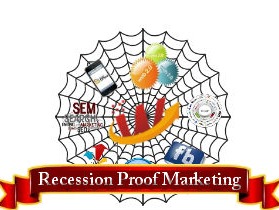
Inspiring Growth: How Matt Ebert Built Crash Champions
When we think of successful entrepreneurs, we often imagine individuals obsessed with numbers or tech innovations. But every so often, a story emerges that transcends traditional business metrics. Enter Matt Ebert, the founder and CEO of Crash Champions, who has not only built a billion-dollar company but has done so with a heart and vision that fundamentally shift what it means to truly succeed.
A Vision for Change: From Humble Beginnings to National Success
In 2019, Matt Ebert ran just six auto body shops. Fast forward to today and his operation has expanded to over 650 locations spanning the nation, illustrating a remarkable growth trajectory. The journey started in his teenage years when a costly car accident led him to learn auto repair from a local technician. It was this direct experience with hardship and community mentorship that laid the groundwork for Ebert's future ventures.
Defining Legacy: Ebert’s People-First Approach
What sets Matt apart is his commitment to uplifting those who often feel marginalized in the workforce. A significant portion of his team—about 9,000 of 11,000 employees—didn't follow the traditional college path, a choice Ebert himself resonates with. This inclusiveness isn’t just good business practice; it speaks volumes about the legacy he aims to create.
He once stated, "Every great business has the power to build something bigger than itself." Ebert believes that legacy is not a logo or valuation but the impact and opportunities created for others. He exemplifies this by creating environments where less conventional paths to success are not only acknowledged but celebrated.
A “Kintsugi” Philosophy: Repairing Lives and Cars
Ebert’s business philosophy parallels the Japanese art of Kintsugi—repairing broken pottery and highlighting its history with gold. The name Crash Champions itself reflects this ethos as they seek to transform lives after accidents. When customers arrive with wrecked vehicles, Ebert’s teams emerge as the “heroes,” restoring both the cars and the spirits of those who drive them.
The Power of People and Community
At the heart of Crash Champions is its “people-first” mentality. Ebert is not just a CEO; he is a mentor who recognizes the importance of investing in his team's potential. Programs like Skills Training and Education Program (STEP) help technicians gain certification while fostering a collaborative and supportive work environment. Ebert emphasizes, “When people grow, the results follow.”
Community Impact: Building Beyond Balance Sheets
Beyond profits, Ebert emphasizes community engagement. Collaborations with initiatives such as the National Auto Body Council’s Recycled Rides® program demonstrate his investment in both local and broader communities. By donating vehicles to those in need, his company embodies a commitment to making life better for others.
What Drives the Entrepreneurial Spirit?
In an era when technological advancements threaten many jobs, Ebert stands firm with the belief that the human touch in service-oriented industries is irreplaceable. His comments on the importance of personal empathy showcase his emotional intelligence as a leader. He asserts, "It gives you a believable empathy," reinforcing the notion that great leaders often walk the same paths their employees do.
Looking Forward: Opportunities for More Than Just Growth
Matt Ebert continues to focus on the long-term development of his company alongside its people. Despite the immense growth, he indicates a desire to be known better for excellence rather than size. His vision includes ongoing opportunities for career advancement internally—creating a future where employees can grow without leaving.
A Final Thought: Legacy vs. Success
As leaders in today’s marketplace, we must confront a poignant question: Are we chasing success, or are we building legacies? The latter, as Ebert illustrates, resonates long after we’re gone. In a world filled with fleeting achievements, it is the lasting impacts that define true success. Each of us has the potential to create a more meaningful narrative not just for ourselves, but for those we inspire along the way.
So, whether you are starting your entrepreneurial journey or scaling an enterprise, remember that successful businesses create lasting footprints, one people-focused initiative at a time.
 Add Row
Add Row  Add
Add 




Write A Comment